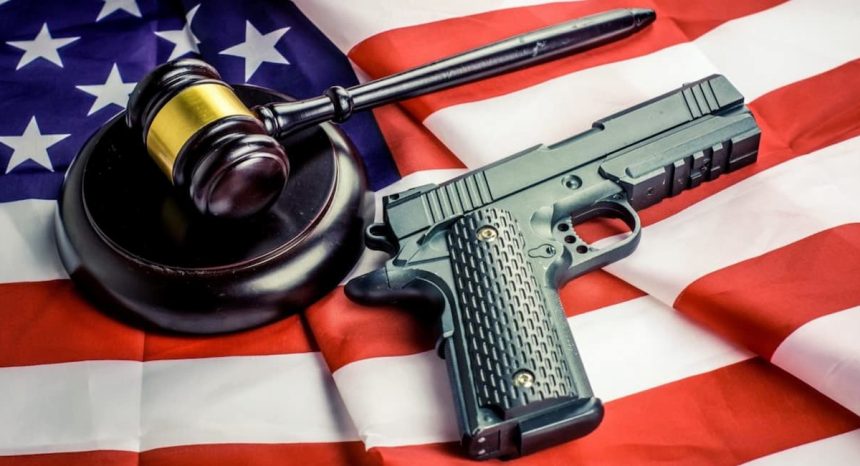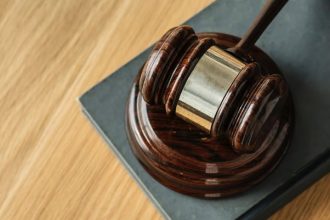When we talk about “Gun Rights,” many people have strong feelings. Some think people deserve a second chance to have guns. Others worry about safety. We need to look at all sides to understand this issue.
- The Ethical Dilemma at the Core
- Legal Landscape and State-by-State Variance
- Rehabilitation and Recidivism: The Crux of the Matter
- Ethical Frameworks: Balancing Rights and Responsibilities
- The Role of Mental Health and Risk Assessment
- The Impact of Technology and Background Checks
- Case Studies and Personal Narratives
- The Intersection with Broader Gun Control Debates
- Moving Forward: A Path to Consensus?
- Conclusion
This means thinking about what’s fair, what’s safe, and what people believe. Let’s dive into this big debate and see what it’s all about.
The Ethical Dilemma at the Core
The restoration of firearm rights to individuals who have lost them, typically due to felony convictions, raises significant ethical questions. On one hand, there’s the argument for redemption and the belief in second chances.
Should someone who has served their time and reintegrated into society continue to bear the mark of their past mistakes? The ethical principle of justice suggests that once a debt to a community is paid, rights should be restored.
On the other hand, there are valid concerns about public safety. Can society trust that an individual, once deemed a risk, is now safe to wield a firearm? This concern is especially poignant in a country grappling with frequent gun violence.
The ethical principle of non-maleficence, or not causing harm, comes into play here, arguing for caution in restoring such rights.
Legal Landscape and State-by-State Variance
The legal process for restoring firearm rights in the U.S. varies significantly from state to state, reflecting the diverse opinions and ethical standpoints nationwide.
Some states have a streamlined process, while others impose a lifetime ban on firearm possession for certain offenses.
This patchwork legal landscape illustrates the lack of consensus on the issue and the struggle to find a middle ground.
Rehabilitation and Recidivism: The Crux of the Matter
Central to the debate is the concept of rehabilitation. The U.S. justice system is predicated on the belief in rehabilitation, yet the reality of recidivism rates complicates the narrative.
Advocates for rights restoration argue that denying fundamental rights to reformed individuals hinders their full reintegration into society and contradicts the rehabilitative aim of the justice system.
Ethical Frameworks: Balancing Rights and Responsibilities
Ethically, this debate can be framed through various lenses. From a deontological perspective, which focuses on adherence to rules, the restoration of rights could be seen as a necessary step following the completion of a sentence.
Conversely, a practical approach, which emphasizes the greatest good for the most significant number, might prioritize public safety over individual rights.
The Role of Mental Health and Risk Assessment
A critical component in this debate is the role of mental health assessments and risk evaluations.
Ensuring that individuals seeking rights restoration undergo thorough evaluations can serve as a compromise, addressing public safety concerns while respecting the principle of rehabilitation.
The Impact of Technology and Background Checks
Advancements in technology, especially in background checks and monitoring systems, provide an opportunity to manage this issue more effectively.
Enhanced background checks could offer a more nuanced understanding of an individual’s suitability to possess firearms, potentially allowing for a more tailored approach to rights restoration.
Case Studies and Personal Narratives
Personal stories and case studies add depth to this debate. Accounts of individuals who have successfully reintegrated into society and become responsible firearm owners challenge the narrative that past offenders are perpetually high-risk.
Conversely, tragic instances where restored rights have led to further violence remind us of the stakes involved.
The Intersection with Broader Gun Control Debates
This issue doesn’t exist in a vacuum but is intertwined with the broader gun control debate in America. The discussions around rights restoration reflect larger societal attitudes toward gun ownership, individual rights, and public safety.
Moving Forward: A Path to Consensus?
Reaching a consensus on restoring firearm rights is challenging, given the divergent ethical viewpoints and public opinions.
However, the legal system needs to strive for a balance that respects the dignity and rights of individuals while prioritizing public safety. This might involve enhanced assessments, periodic reviews, and a more uniform legal framework.
Conclusion
The debate over restoring firearm rights is a microcosm of the larger struggles in balancing individual rights with public safety. It forces us to confront difficult ethical questions about redemption, justice, and the nature of rehabilitation.
As society evolves, so must our approach to this complex issue, ideally in a direction that harmonizes the diverse ethical viewpoints and public opinions into a coherent, just, and safe policy for all.















